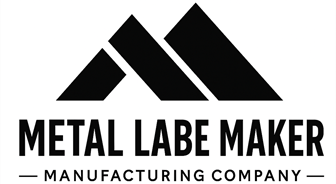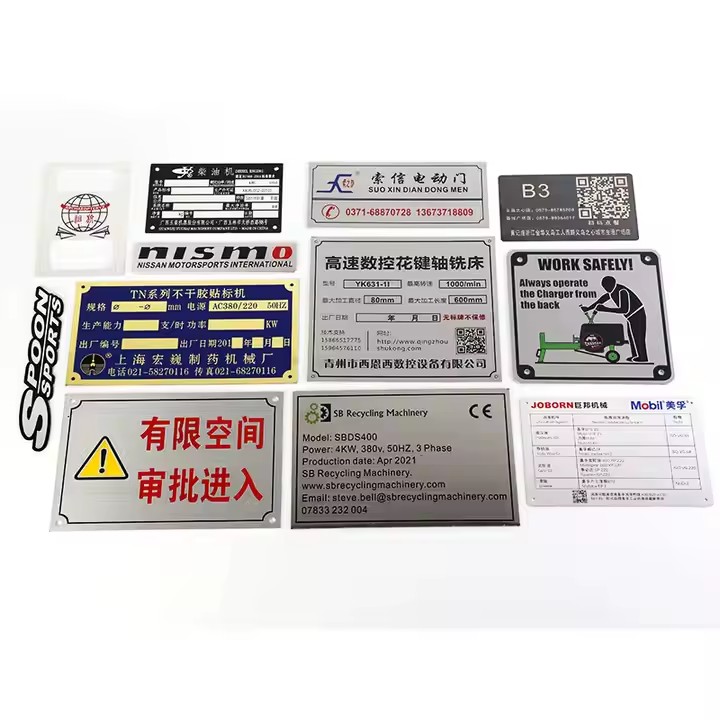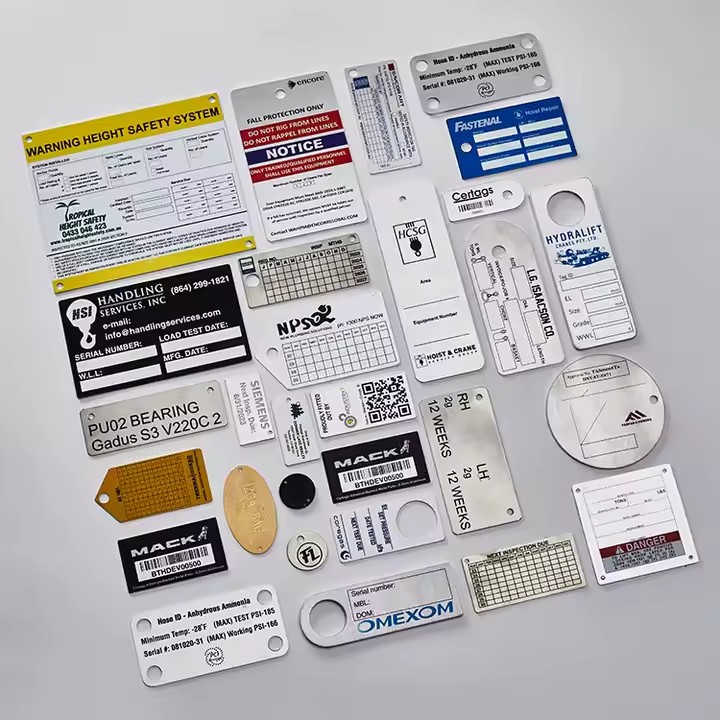Metal Nameplates for Industrial Equipment: Applications & Customization Tips
Metal nameplates play a crucial role in industrial equipment by providing durable identification, safety information, and branding. Whether for heavy machinery, control panels, or electrical devices, the right metal nameplate ensures compliance, traceability, and professional appearance.
This article explores common applications of metal nameplates in industrial settings and offers practical customization tips to optimize their performance and longevity.
Common Applications of Metal Nameplates in Industry
-
Equipment Identification:
Displaying model numbers, serial numbers, manufacturer details, and technical specifications. -
Safety and Warning Labels:
Clearly communicate safety instructions, hazard warnings, and compliance certifications (e.g., CE, UL). -
Control Panels and Switchplates:
Marking buttons, switches, and indicator panels with durable, legible labels. -
Maintenance and Inspection Tags:
Providing space for service dates, inspection records, and maintenance schedules. -
Asset Tracking:
Facilitating inventory management and equipment tracking in large industrial facilities.
Material Choices for Industrial Nameplates
Industrial environments demand tough materials that resist wear, corrosion, and extreme conditions:
-
Stainless Steel:
Ideal for harsh environments, offering excellent corrosion and heat resistance. -
Aluminum:
Lightweight and corrosion-resistant, especially when anodized for enhanced durability. -
Brass:
Used for decorative or specialized applications requiring good corrosion resistance.
Surface Finishes for Industrial Durability
Choosing the right finish impacts both aesthetics and lifespan:
-
Anodized Aluminum:
Offers a colored, corrosion-resistant surface suitable for outdoor use. -
Brushed or Satin Finish:
Reduces glare and hides fingerprints, ideal for control panels. -
Powder Coating:
Provides a thick, protective colored finish resistant to abrasion and chemicals. -
Clear Coating:
Adds an extra protective layer against oxidation and wear.
Marking Methods for Longevity and Clarity
The right marking technique ensures information stays legible under tough conditions:
-
Laser Engraving:
Permanent, abrasion-resistant, and suitable for fine details and serial numbers. -
Screen Printing:
Durable with baked inks, excellent for high-volume, solid-color designs. -
UV Printing:
High-resolution, full-color printing for detailed logos and graphics. -
Etching and Stamping:
Traditional methods offering deep, long-lasting marks.
Customization Tips for Industrial Metal Nameplates
-
Design for Legibility:
Use clear fonts and sufficient contrast between text and background. -
Include Necessary Compliance Marks:
Incorporate industry-required certifications and symbols. -
Consider Environmental Factors:
Tailor materials and finishes to resist moisture, chemicals, heat, or UV exposure. -
Plan for Installation:
Choose hole placements, adhesive types, or mounting options compatible with equipment. -
Allow Space for Variable Data:
For serial numbers, dates, or barcodes that change per unit.
Conclusion
Metal nameplates are essential components in industrial equipment, combining durability, clarity, and compliance. By selecting the appropriate materials, finishes, and marking methods—and applying smart customization—you can create nameplates that withstand industrial challenges and communicate critical information effectively.
💬 Need custom metal nameplates for your industrial equipment? Contact us today for expert advice, design support, and high-quality manufacturing tailored to your needs.







